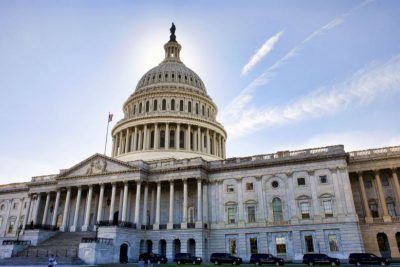
Immigration in the United States has been a contentious topic of debate for years, as Congress has failed to determine and finalize an agreement on immigration reform, largely shifting certain policy decisions squarely into the judicial and executive branches of government. President Donald Trump’s reign has seen him bid to halt immigration, build a disputed wall that would border Mexico, deport millions of undocumented immigrants and momentarily ban Muslims from the country. Frustration has been the dominant mood around this matter for many people, and for a significant duration of time. Jean Danhong Chen has discussed a few of the major controversies currently plaguing the U.S. immigration structure.
America’s Immigrant Population
The Census Bureau proclaims that 14 percent of the U.S. population consists of immigrants and, when factoring in their U.S.-born children, they total about 27 percent of the country’s citizens. Mexico, the leading country of origin for U.S. immigrants, accounts for 25 percent of the total, with South and East Asia also showing rapid increases. While the undocumented population has come down since the 2008 economic catastrophe, Customs and Border Protection (CBP) noted that the first half of 2019 had more than double the number of people captured or stopped at the southern border than what was seen during the previous year’s same period.
Many individuals who entered the United States legally, but remained longer than their visa permitted, make up a huge piece of the undocumented population. A report from the Center of Migration Studies discovered that those people who overstayed their visas surpassed the number of individuals who illegally crossed the border from 2010 to 2017. The Pew research center concluded some staggering statistics: immigrants totaled roughly 17 percent of the U.S. workforce in 2014. Of that 17%, two-thirds of which were in the country legally; immigrants made up 45 percent of domestic employees, comprising a further 36 percent in U.S. textile manufacturing, 33 percent in agriculture and 32 percent in accommodation. Lastly, Jean Danhong Chen states that the U.S. workforce would shrink from 173.2 million in 2015 to 165.6 million in 2035 if immigrants were removed from the equation.
How Americans Feel Towards Immigrants
A 2019 Gallup poll stated that 76 percent of Americans viewed immigration as a positive for the United States, with 81 percent backing a route to citizenship for undocumented immigrants, provided they fulfill certain requirements. Three years earlier, another Gallup poll proved that more Republicans were in favor of a path to citizenship than a potential border wall.
Presidential Actions For Immigration
President Barack Obama’s administration introduced the Deferred Action for Childhood Arrivals (DACA) in 2012, a program that supplied two-year deportation postponements and work permits to undocumented immigrants who arrived in the United States as children and possessed no criminal record. Upwards of 900,000 people utilized DACA’s offering as of November 2018. However, certain immigrant advocacy groups denounced his administration for standing idly by while more than three million people were deported over the course of his tenure. More than a few Republicans commented on the Obama administration’s soft stance on enforcement, as deportation tactics were largely applied to undocumented immigrants with a criminal past.
In addition to his vision of constructing a wall to control the U.S. border with Mexico, President Donald Trump also put his foot down on unauthorized immigrants who were caught at the border. At one time, these individuals would have been permitted to be in the country while awaiting a court hearing, but now it is a stricter process. Trump went on to expand the categories of unauthorized immigrants who were top priorities for deportation, ordering greater numbers of enforcement personnel for this goal. For terrorist prevention, he opted to ban nationals from Libya, Iran, Iraq, Somalia, Sudan and Yemen from the United States for at least 90 days. Then, he blocked Syrian nationals indefinitely and suspended the U.S. refugee program for 120 days. Trump’s limit on refugees admitted into the United States sunk to 50,000, a figure that has been more than cut in half. More than 250,000 people applied for asylum in 2017 and Trump has proven to have a determination for making this a problematic process as well. Jean Danhong Chen notes that like Presidents Bush and Obama, Trump was highly criticized for the reliance on detentions, which, in his case, were for people caught crossing the border without authorization. According to a 2019 report from the Department of Homeland Security’s inspector general, overcrowding and extended detentions were the norm in these facilities, while detainees were often left without proper bedding, showers or clean clothes for weeks at a time.
Jean Danhong Chen concludes that America is facing an immigration problem that if left unsolved, could drastically hinder the US economy in the years to come.










